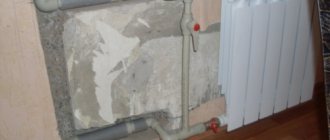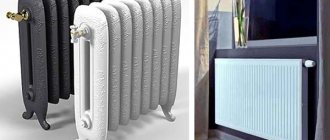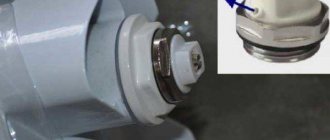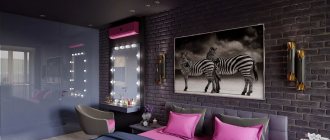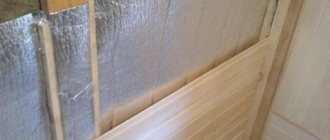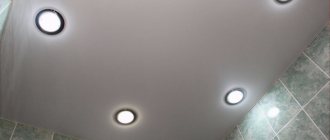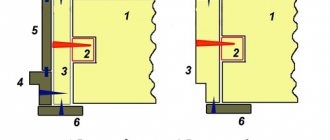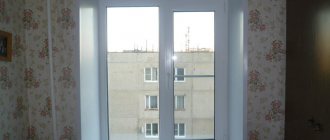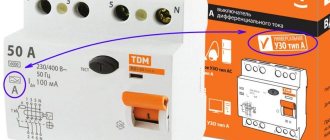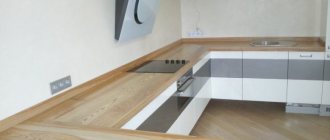In addition to keeping you warm, modern radiators have acquired unusual designs and colors. Heating devices have become, one might say, one of the starting points in interior design. Their vintage, modern or futuristic look can fit perfectly into the look of your home. The choice of styles and materials is large: from classic to minimalism, from aluminum to cast iron and stainless steel. And often heaters look like anything except radiators themselves. Let's start with the least exotic options.
Merging with the walls
Calculate the exact cost of repairs using an online calculator
and receive a free detailed estimate for repairs
Calculate
The radiator merging with the wall is still noticeable thanks to the copper fittings, but just enough to give the monochromatic interior a more strict outline.
Photo: bisque.co.uk
How to choose the right one
Before you buy and install designer heating radiators in your apartment, you need to make a choice. Well-known companies today produce such heating devices: AEON, Arbonia, BREM, Broner, Cordivari, Demir, Dokum, Exemet, Fondital, Guratec, Hidria, Klima, Instal, Projekt, IRSAP, ISAN, Jaga, Kermi, MlniB, Purmo, RETROstyle , Runtal, SAVVA, Terma, Varmann, Viadrus, Zehnder, Rad Steel.
All of them offer quite decent products, which are sold in construction stores or branded heating equipment boutiques.
There are rules for choosing designer heaters that should not be neglected.
- Products must correspond to the general style of the premises.
- Important parameters are operating pressure and power, that is, heat transfer efficiency. They must ensure the normal functioning of devices in the heating system of the house.
- In terms of design and dimensions, the products must fit perfectly into the living space and provide good heat transfer.
- Designer batteries must have instructions indicating technical characteristics.
- The units must be free of defects.
- The threads at the connection points between the radiators and the pipe cannot be damaged.
The power of the heater depends on the type of building (panel, brick or wood), the number, area and thermal permeability of windows, the number of doors and walls. For example, for a standard apartment with a ceiling no higher than 3 m, a radiator with a power of 100–130 W/m2 is suitable.
Power characteristics should be increased if the following factors are present:
- two windows - you will need to increase heat transfer by 20%;
- closed front radiator panel with horizontal convection openings - by 15%;
- the presence of heavy multi-layer curtains - by 15%;
- elongated room configuration - by 10%.
Shapes and lines
If a designer decides to play with form, he does it masterfully. We are used to seeing hexagon tiles on the floor or on the wall in the bathroom, or, in extreme cases, as a backsplash in the kitchen. How do you like this radiator, made of voluminous hexagons? Too bright? Okay, choose calm lines in an interesting combination.
Photo: m.rouding.com
Cast iron radiator batteries
Cast iron radiators heat up slowly, but they also release heat longer than their steel or aluminum counterparts. This is one of the main advantages, especially for those whose heating is often turned off.
Rust resistance and the ability to add sections make these radiators versatile and durable in use. The reagents contained in water are not capable of damaging the metal.
Good radiators for heating the house, but the disadvantages are that they are too heavy and unattractive in appearance.
Abstract figures
If the great Salvador Dali could draw a clock sliding off a table, then why can’t a designer give a radiator the shape of a caterpillar divided into sections, or a rectangle consisting of cells? In these images, everyone will see something of their own, abstract or quite concrete.
Photo: decoist.com
More about varieties
Replacing a battery in an apartment is a fairly responsible process, so its implementation must be approached taking into account the various nuances and technical characteristics of the equipment.
First, let’s decide which design of radiators will best fit into the interior of your home. They are:
- panel. They are a one-piece structure, without division into sections. They have convection holes that allow the room to heat up fairly quickly;
- sectional. As the name suggests, such devices consist of sections. Their main advantage is the ability to increase heating power due to the possibility of connecting additional sections
- tubular. The basis of the design is a steel core with dissipating plates. The parts of this type of radiator are welded together, so before purchasing you need to know exactly the required heating power.
The most common option in apartments is sectional heating equipment, since the panels may not withstand a pressure surge in the system, and the peculiar appearance of pipe radiators is not suitable for every style in which the room is decorated.
The main requirements when choosing and replacing heating batteries are: their heat transfer performance, the ability to withstand a high load of the central system (pressure up to 15 atm), presentable appearance, reasonable cost, good quality and wear resistance.
To do this, you need to understand what material is used to make radiators and study their basic properties, depending on the raw materials used in production.
Aluminum structures have an attractive appearance and good heat dissipation. But when purchasing this type, it is necessary to pay attention to the presence of a special polymer coating in the internal cavity, which extends the service life and protects against the adverse effects of the coolant.
Steel batteries are attractive due to their low cost, but this option is best suited for private homes; high pressure in a central heating system can cause serious damage to the product and significantly reduce its service life.
Cast iron radiators are unpretentious to use, have high strength, are wear-resistant, and are not subject to changes in their quality when in contact with the coolant. A significant disadvantage of this material is low heat transfer. There is also a restriction on their installation in high-rise buildings with more than nine floors.
The best heating batteries for an apartment are bimetallic. This option is considered the most optimal due to the combination of the main advantages of steel and aluminum radiators: a steel core provides resistance to high pressure, and an aluminum body provides the maximum possible thermal conductivity.
Copper radiators have a high efficiency, are not afraid of water hammer, are highly durable, are not subject to corrosion, and have a long service life. These modern options have a stylish design that will make them the centerpiece of any room.
A feature that does not allow mass installation of batteries with such excellent characteristics in apartments is their very high cost.
For reference, the most budget-friendly options are cast iron and aluminum structures; steel and bimetal products are included in the middle price category. The most expensive, premium heaters: copper.
Radiator-chain
You will not be able to dry towels on such a radiator. But there is something to surprise guests! In our opinion, such an object lacks brightness - the radiator almost merges with the wall and does not visually warm the bathroom. That would be nice!
Photo:
Methods of stylistic decoration
The simplest option for disguising an unsightly radiator that does not fit with the stylistic decision in the design of the room is considered to be a screen. This is most often a ready-made panel with holes that is used to cover the battery. It can be suspended or built into a special box, that is, it can completely hide the radiator. Screens are made of glass, MDF, metal. There are also wooden panels that look like “wicker”. The color of their surface is selected to match the furnishings of the room. Glass is ideal for modern “high-tech” styles. Metal screens are often made with forging elements. Floral motifs will fit in an original way into country or classic style. Radiators can be decorated not only with the help of screens. The simplest, budget-friendly methods include painting. Colored radiators are combined with the shade of curtains, walls, or make the radiator an accent of the interior. Sometimes the unit is covered with strips of wallpaper, thereby completely masking the surface. Black, gray, white radiators are combined with loft, minimalism, high-tech, futurism and avant-garde. Sometimes fabric curtains are used, which are attached to the windowsill. A similar cozy solution in the style of Provence, eclecticism, ethnicity or classic looks appropriate. Using putty, the drawing is given additional volume. Copper radiators are decorated with artificial patina, aging the surface.
In some cases, radiators are skillfully decorated to look like a “fireplace”. On the sides of the battery there are shelves for books and decorations. It’s worth remembering: the deeper the battery is hidden, the more it will affect its performance.
How to make an ordinary heater into a designer one with your own hands
Decorative heating sources are often made according to individual projects. Such devices are very expensive. But it is possible to turn a simple battery into an unusual designer product.
The easiest way to do this is to paint the device in its original color: blue, green, purple, maroon, brown. Also, by applying textured patterns, you can create an imitation of steel, wood and other materials.
Cast iron batteries are installed in ancient mansions and buildings from the beginning of the last century. Over time, they become unattractive, but they can be restored and made designer.
Restoration of a cast iron battery is carried out in three stages:
- cleaning the surface with sandpaper;
- application of the selected paint;
- complete drying.
Before starting work, you should turn off the heating, because the paint must dry naturally. If you have artistic skills, you can draw various ornaments on the battery, after first drawing the outlines with a pencil. Interesting patterns are obtained using gilding.
By the way, you need to select the most durable paints so that they do not change color when exposed to high temperatures. To decorate radiators, you can use ready-made stencils and stickers, which are attached using a special heat-resistant glue. At the last stage, the battery is coated with colorless varnish.
Cost of designer radiators of different types
Decorative heating devices are more expensive than conventional ones. The price is influenced by the dimensions of the product, material of manufacture and decorative features.
Cost of radiators made of different materials:
- Bimetallic will cost 2,700–15,000 rubles.
- Steel tubular radiator - 2700–44200 rubles.
- Glass device - 19,200–49,800 rubles.
- Designer battery made of cast iron - 6600–172100 rubles.
- A wooden battery can be bought for 23,500–46,900 rubles. Read the solid fuel boiler controller on our website.
